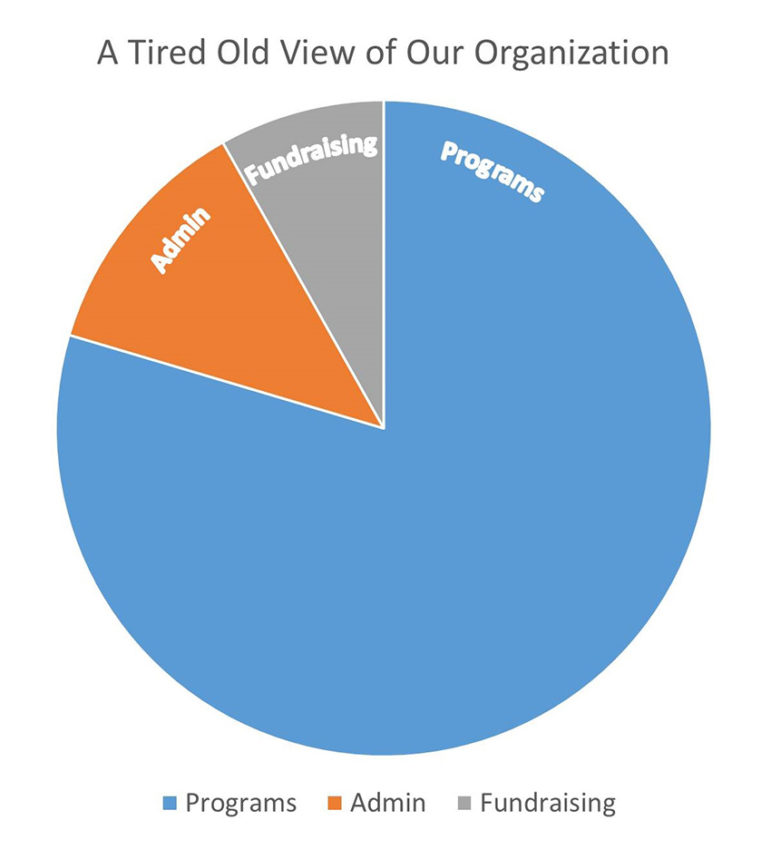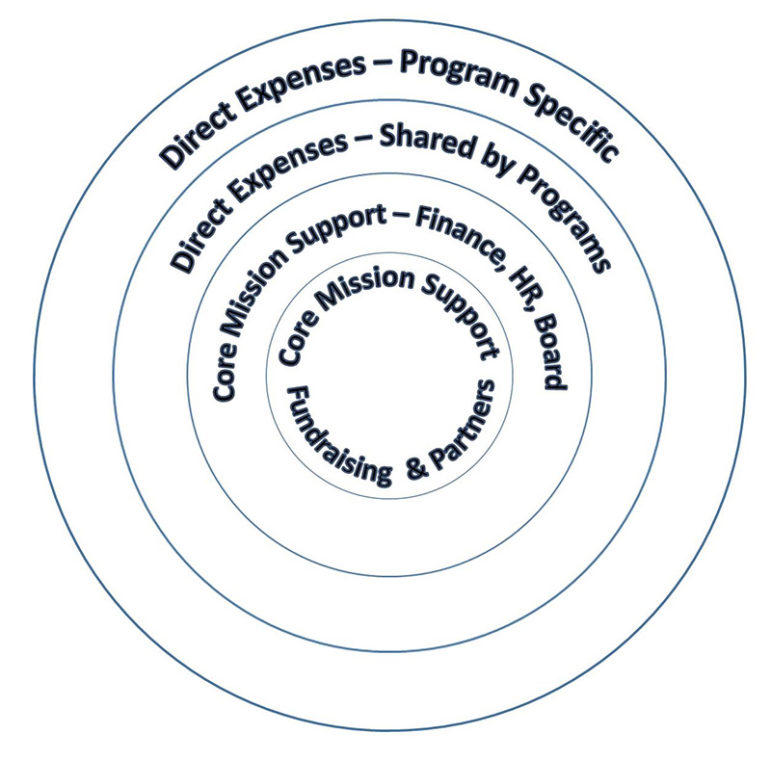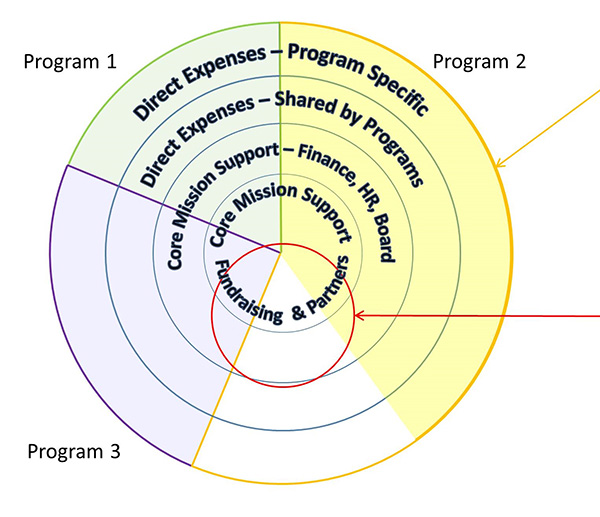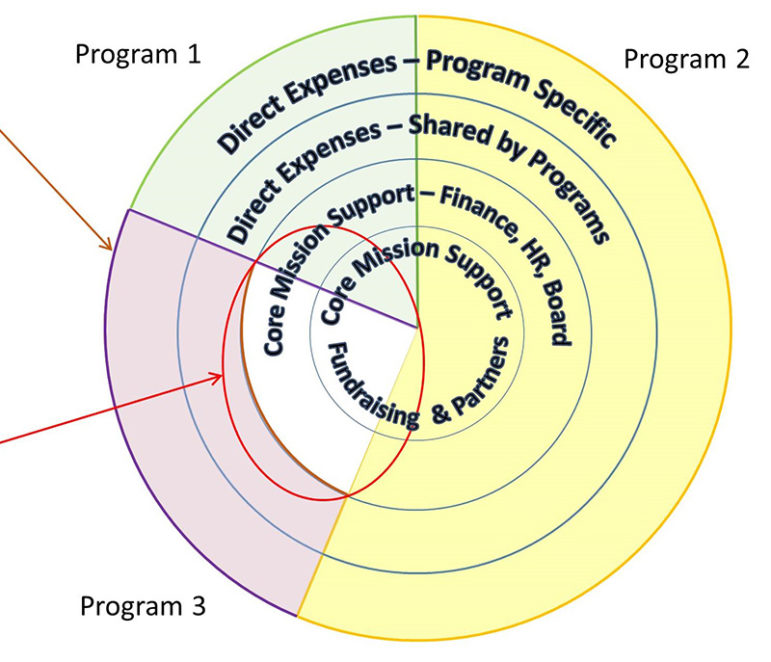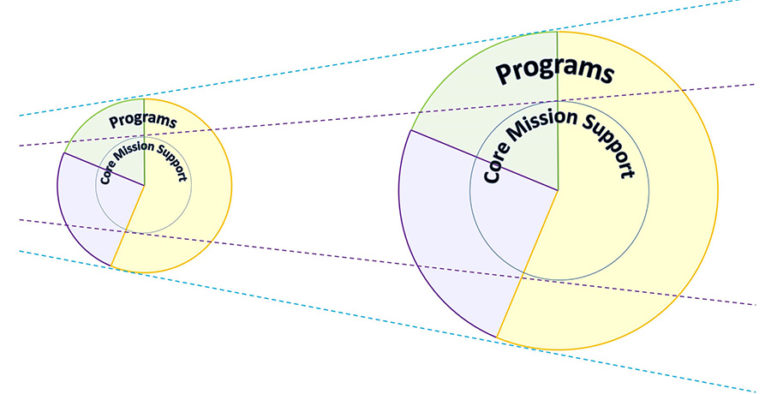Original version written by By CURTIS KLOTZ | August 16, 2016
Most nonprofit leaders agree that we need a new way to communicate about the true costs of our programs and the vital importance of strong organizational infrastructure. But we have not yet developed a simple, consistent message when sharing our view with potential supporters and investors. We are stuck with old terms and old images.
The following series of images and descriptions is really a blog in pictures. How we visualize our understanding of nonprofit structure and programs shapes the overhead debate. It’s time to get graphic about our new ideas—to deploy fresh images to help educate the public, our funders, and ourselves.
It’s Time to Retire This Pie Chart
When nonprofits are viewed this way, no matter how hard we try to think differently, we imagine important infrastructure of our organization as taking a slice out of the pie—as diminishing the “real” work of our mission.
Strategic financial functions, good governance, and the development of key funding partnerships are vital to strong organizations. We need a new way to communicate this truth.
We Need a New Image
Rather than thinking of our investment in key infrastructure as diminishing our programs, it should be seen as valuable Core Mission Support.
Core Mission Support functions are necessary, vital, and integral.
- Strong, strategic finance and accounting
- Progressive human resources practices
- Capable, responsive board governance
- Talented and engaged development staff
Whole Organizations and True Program Costs
Each of our programs is built around, is supported by, and shares responsibility for Core Mission Support.
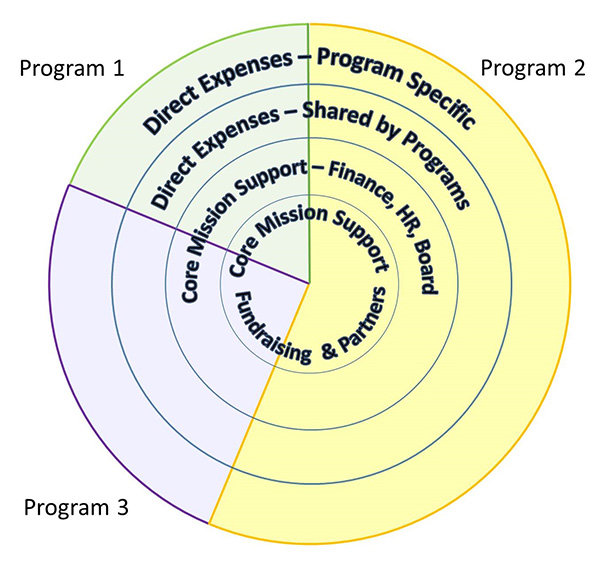

All of the resources we need to accomplish our programs are the True Program Costs, which include four types of expenses:
- Direct Expenses: Program-Specific
- Direct Expenses: Shared by Programs
- Core Mission Support: Finance, HR, and Board
- Core Mission Support: Fundraising & Partners
Underfunded Programs Create a Gap at the Core
Some programs are only partially funded by contributions or by earned revenue.
When a program is only partially funded, the expenses not covered include a proportionate share of the Core Mission Support. This creates a Gap in funding for the finance, human resources, governance, and fundraising infrastructure that support the entire organization.
Line-Item Funding Creates a Gap at the Core
Some funders limit their support to only the direct expenses of program.
When funders support only direct expenses, they deny funding for Core Mission Support. This leaves a Gap at the center of our organization. Not only is one program affected, but the health of the entire organization is at risk.
Invest in the Core to Grow the Mission
The growth and effectiveness of our mission work depend on having a solid core at the center of our organizations. Investing in our infrastructure is savvy, prudent, and absolutely necessary.
Go Visual With Our New Thinking
Once we have a new way of understanding and communicating about the Core Mission Support needed by our organizations, it is our job to share our thinking with others. Our funders, supporters and investors all want us to succeed. They are partners in accomplishing our mission work. But like us, they may need help reimagining the role strong infrastructure plays in amplifying program effectiveness. By providing a simple visual guide, we can help transform the way we talk about, picture, and ultimately fund the Core Mission Support that is at the center of all great nonprofits.
https://nonprofitquarterly.org/2016/08/16/graphic-re-visioning-nonprofit-overhead/

